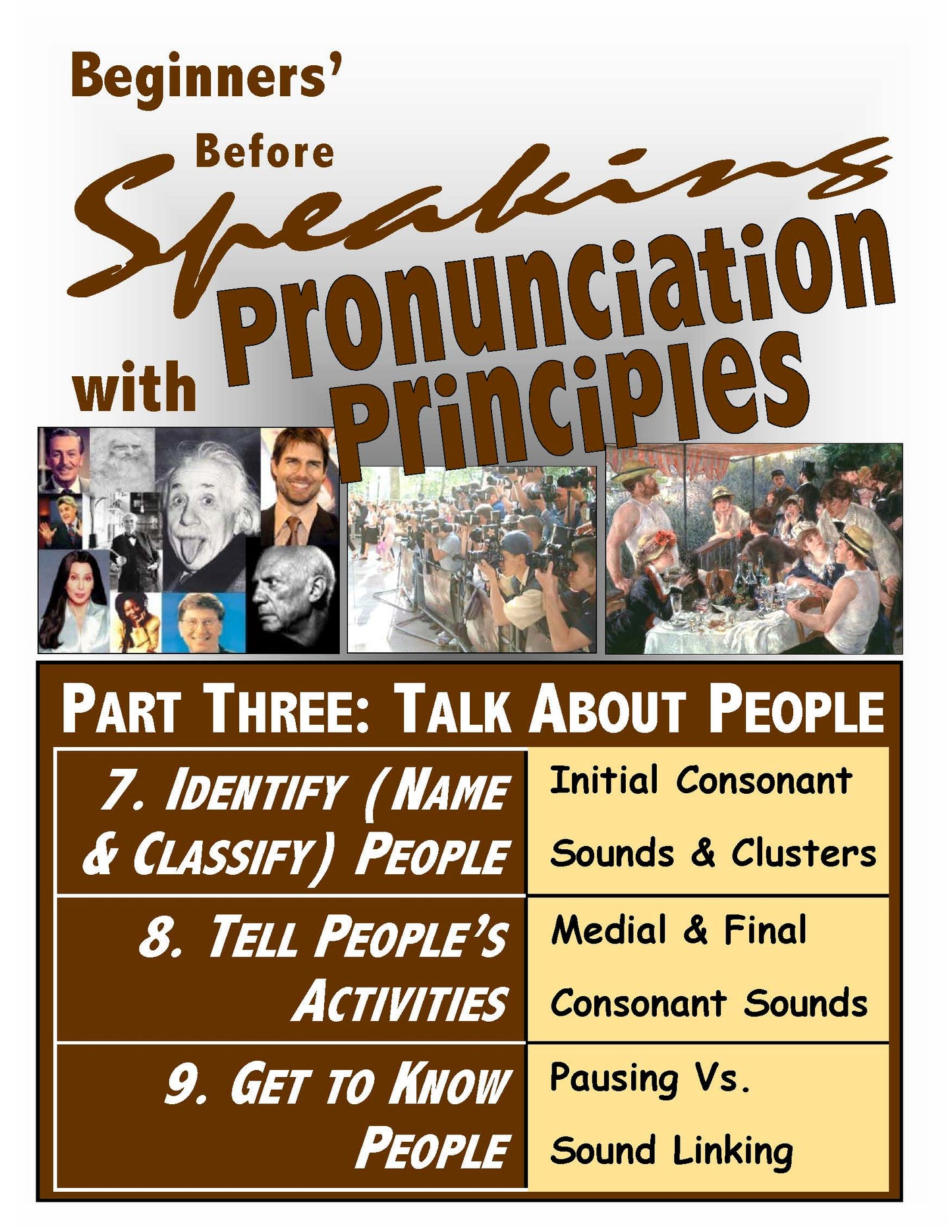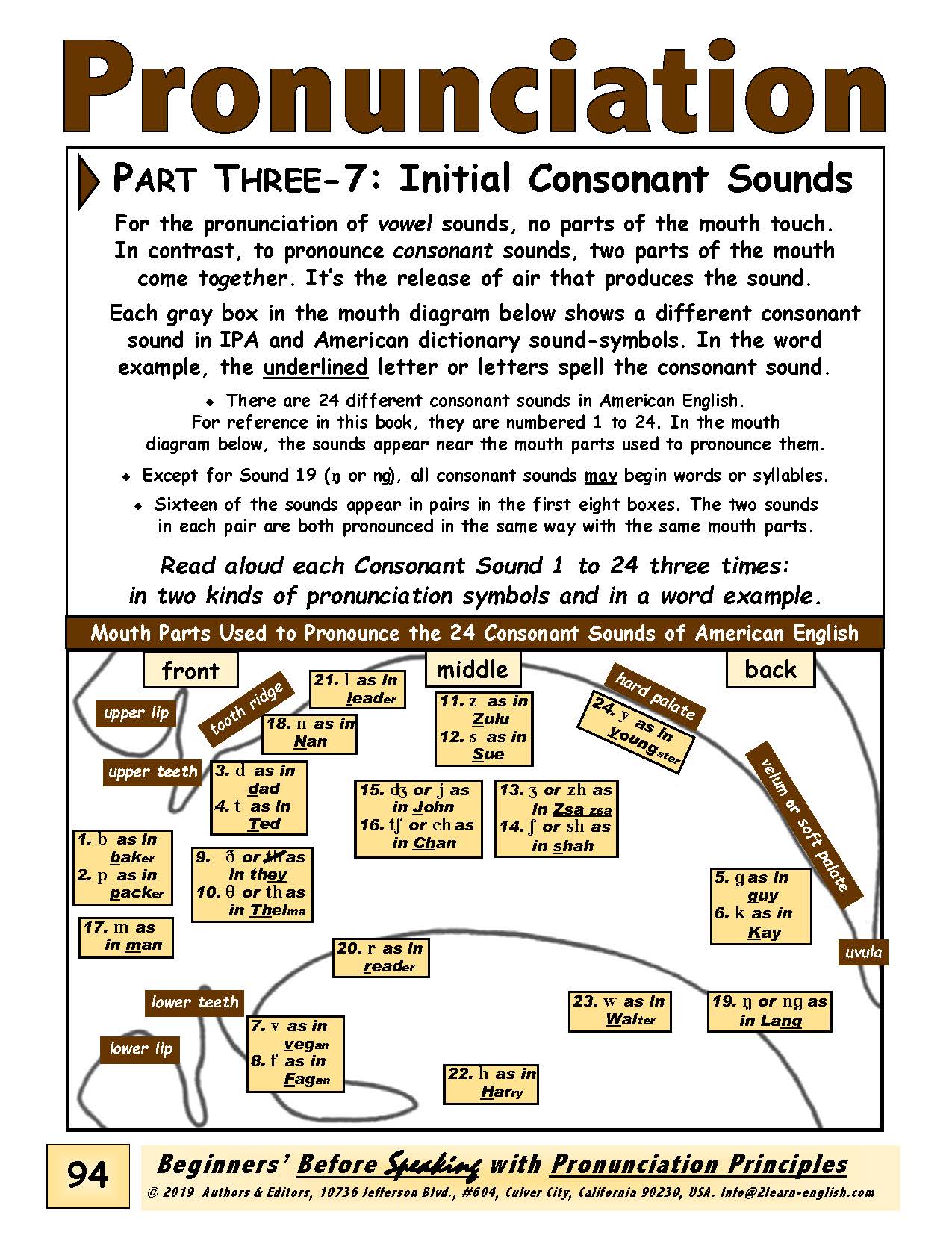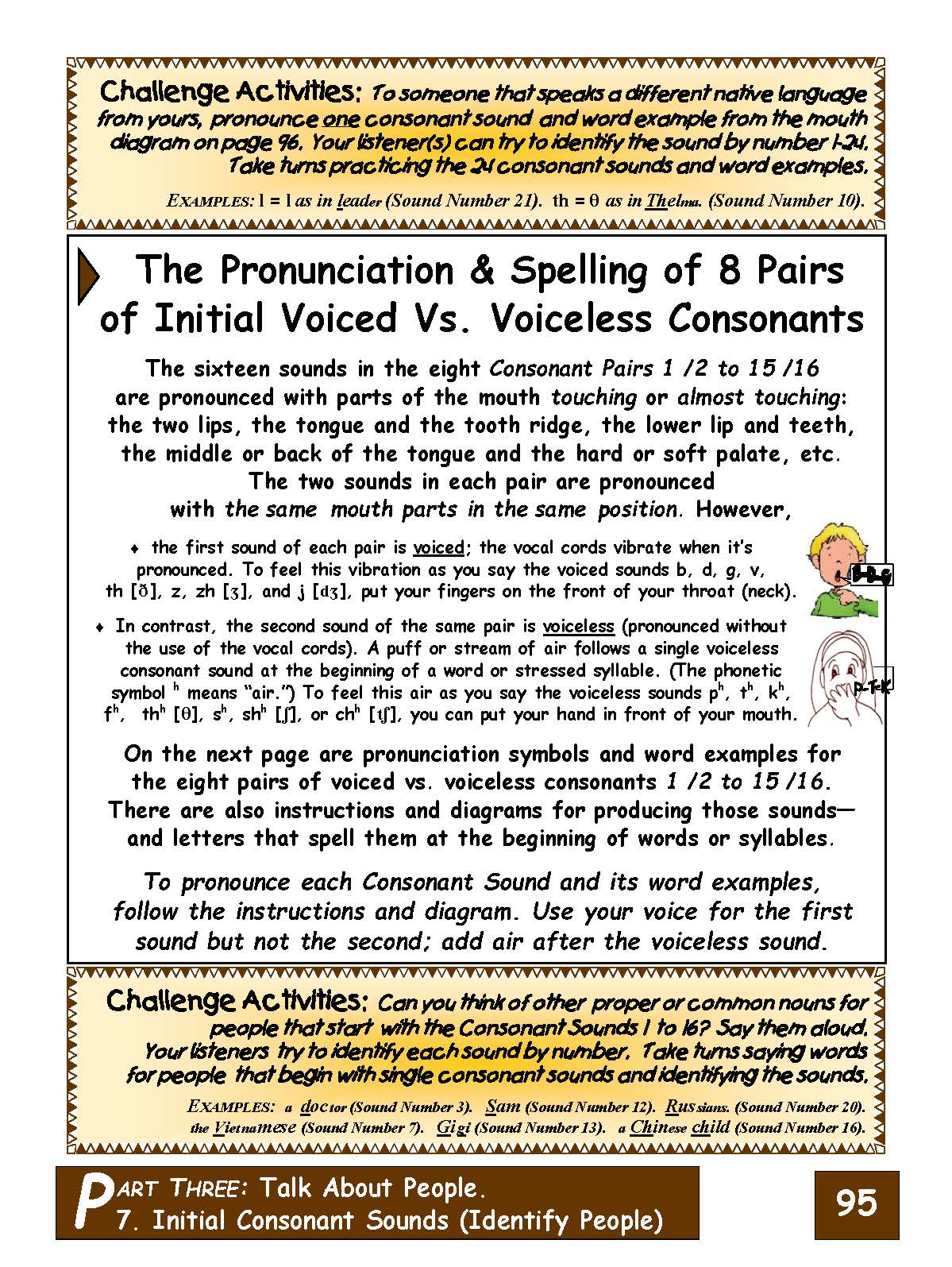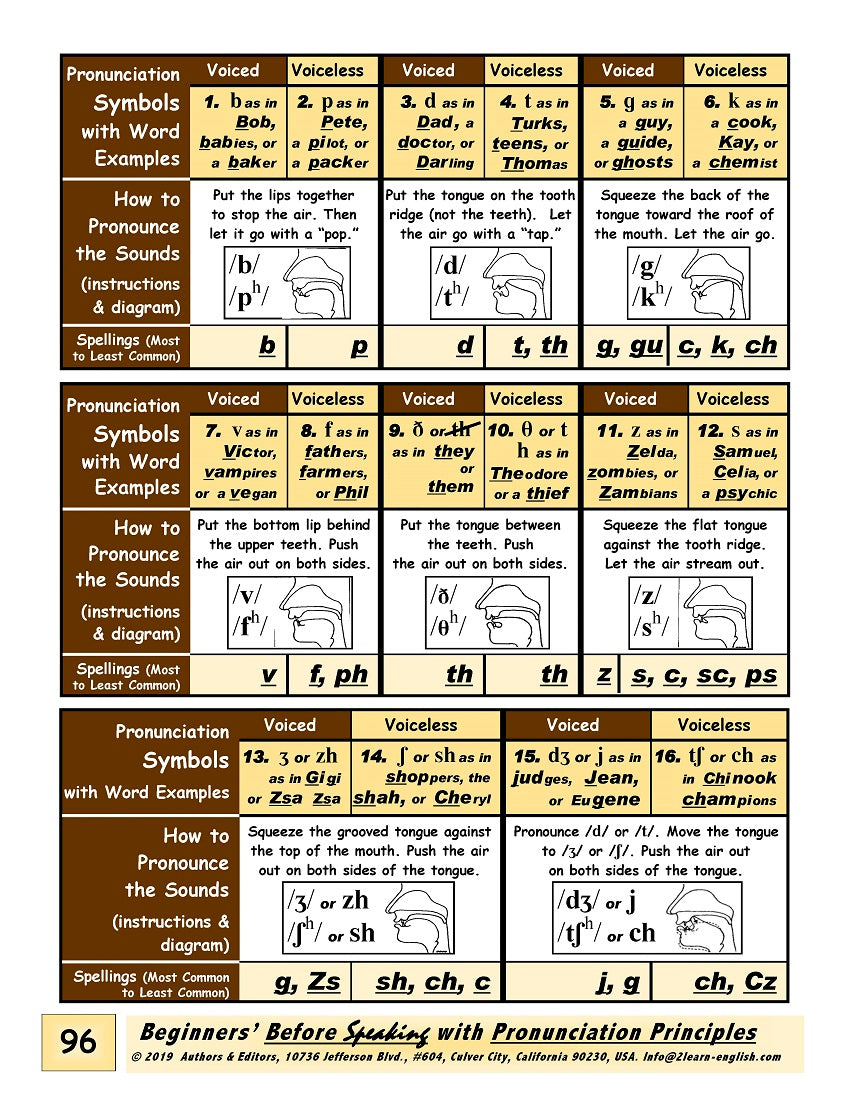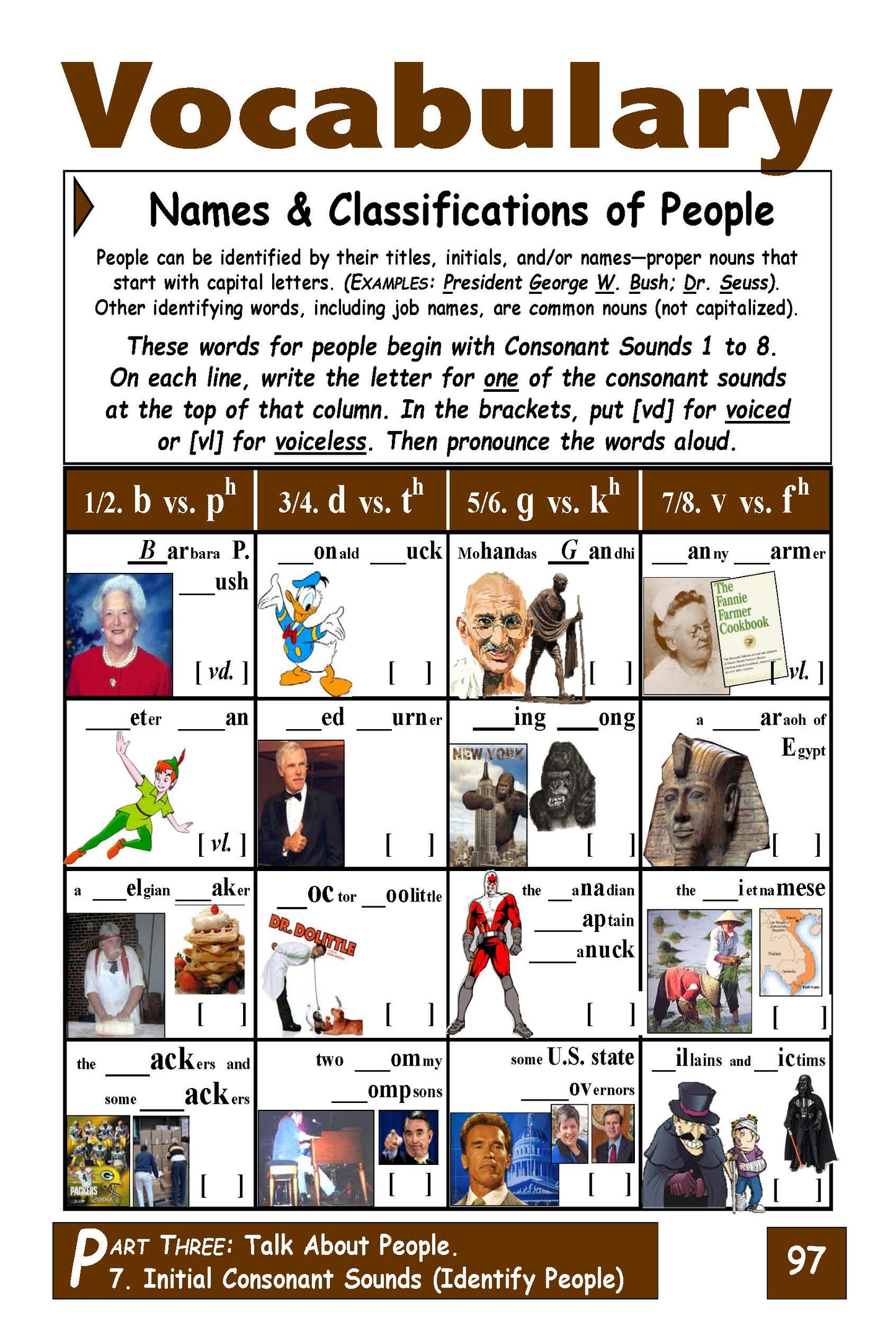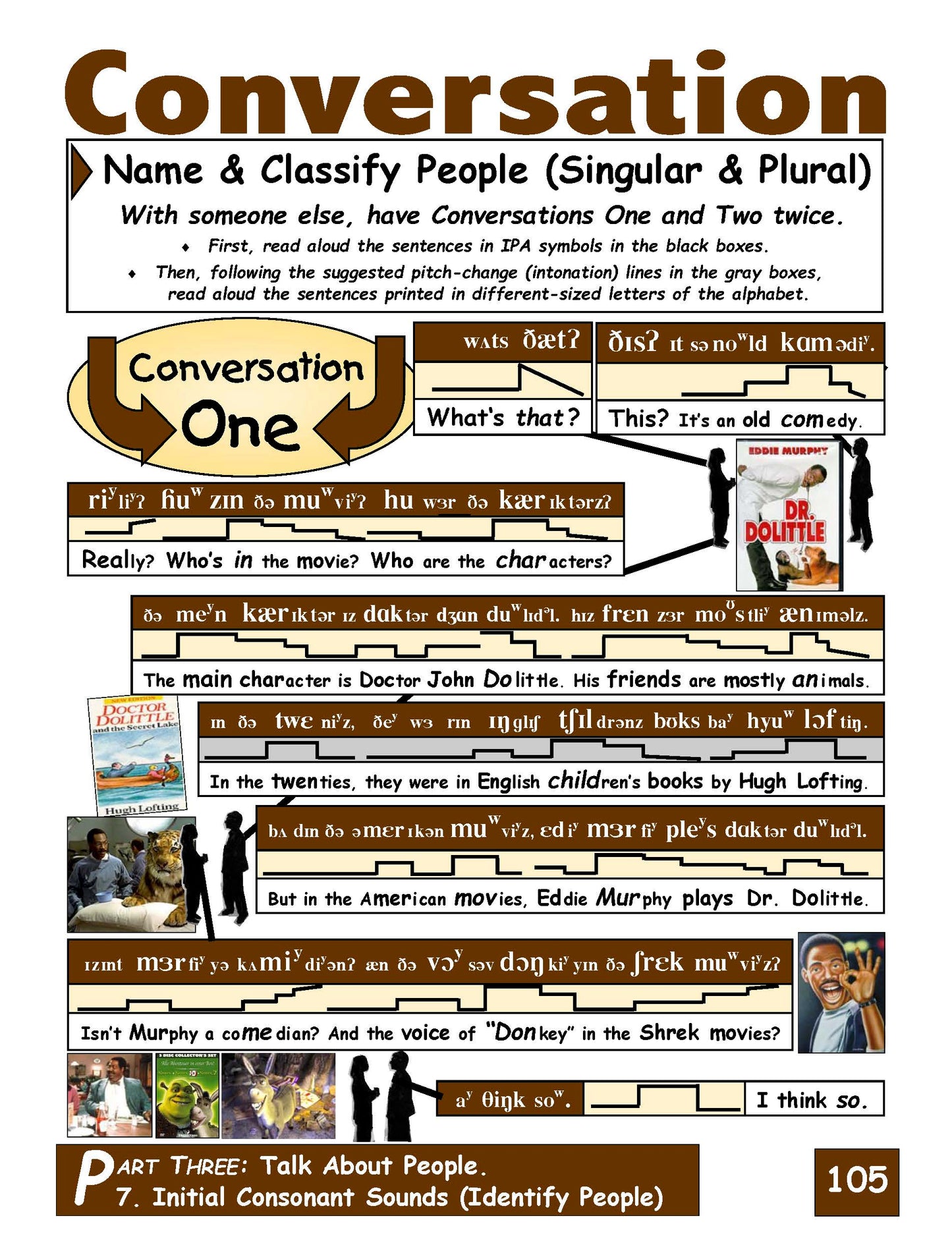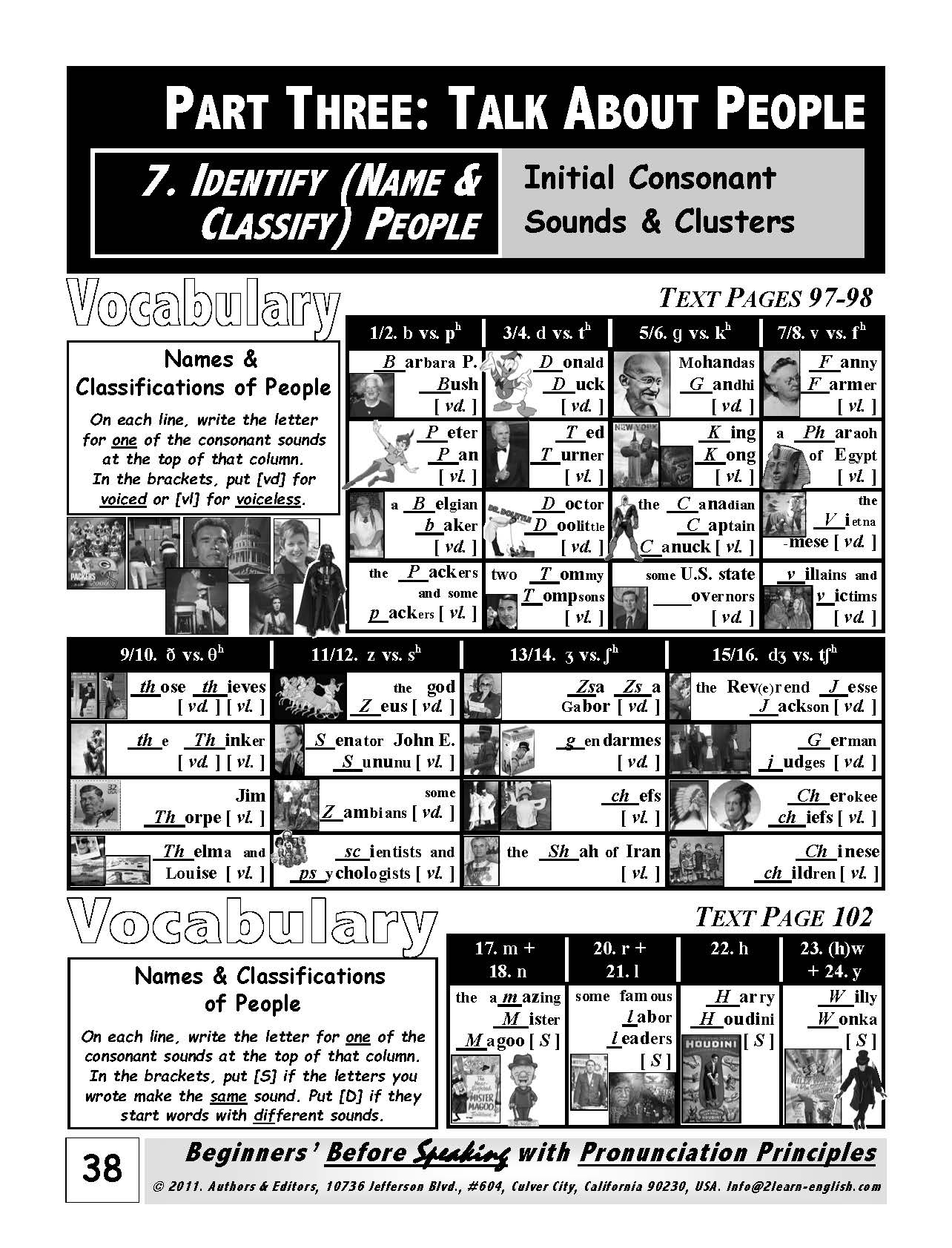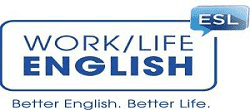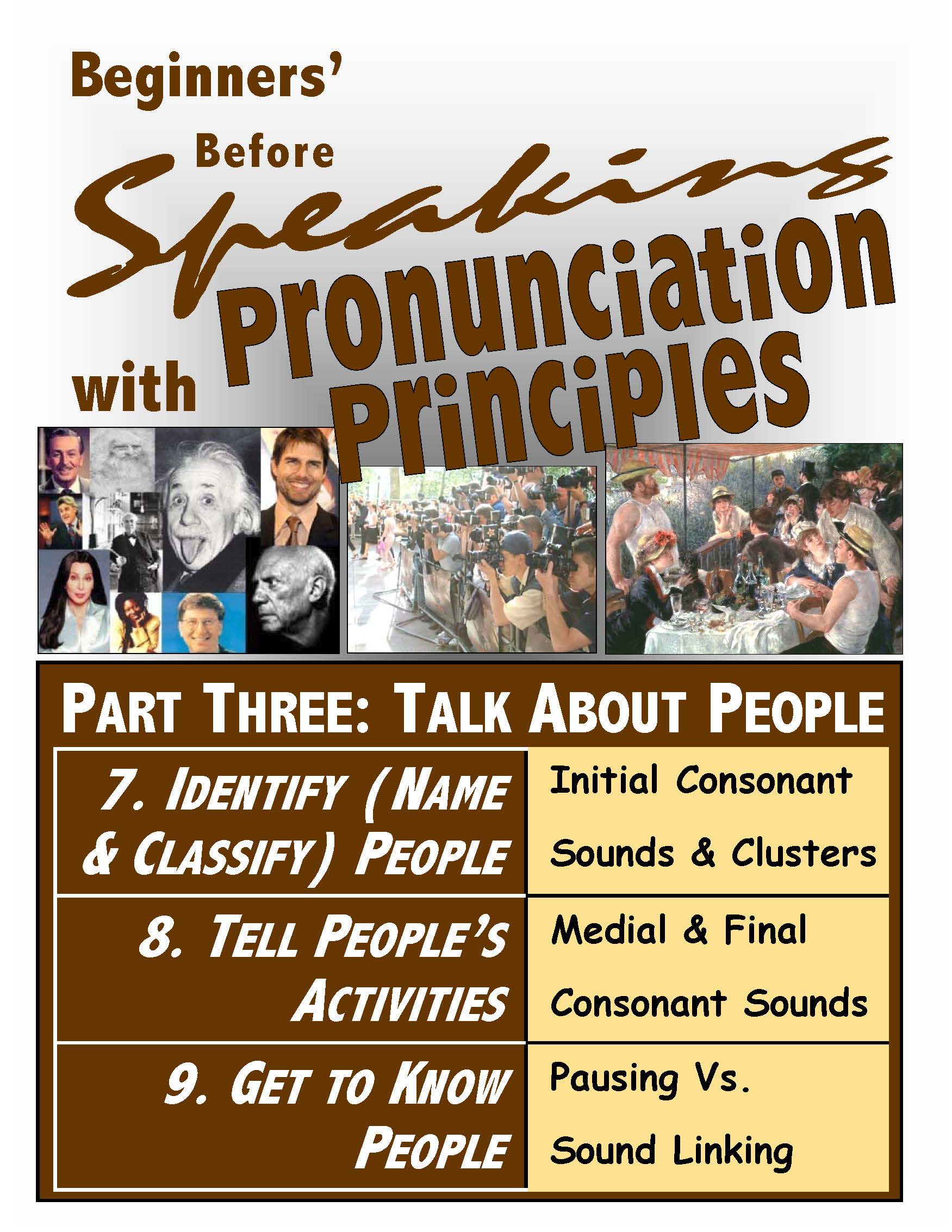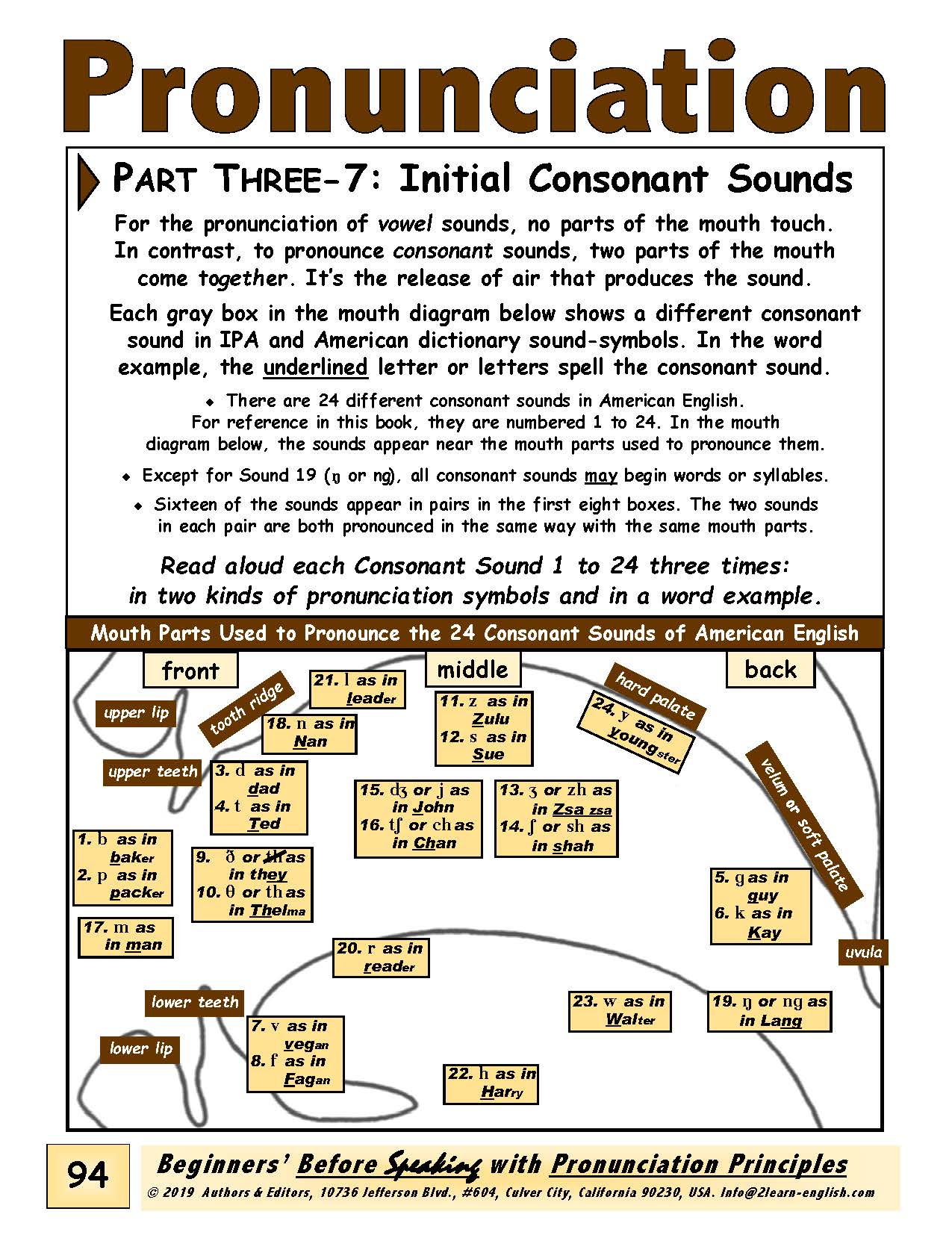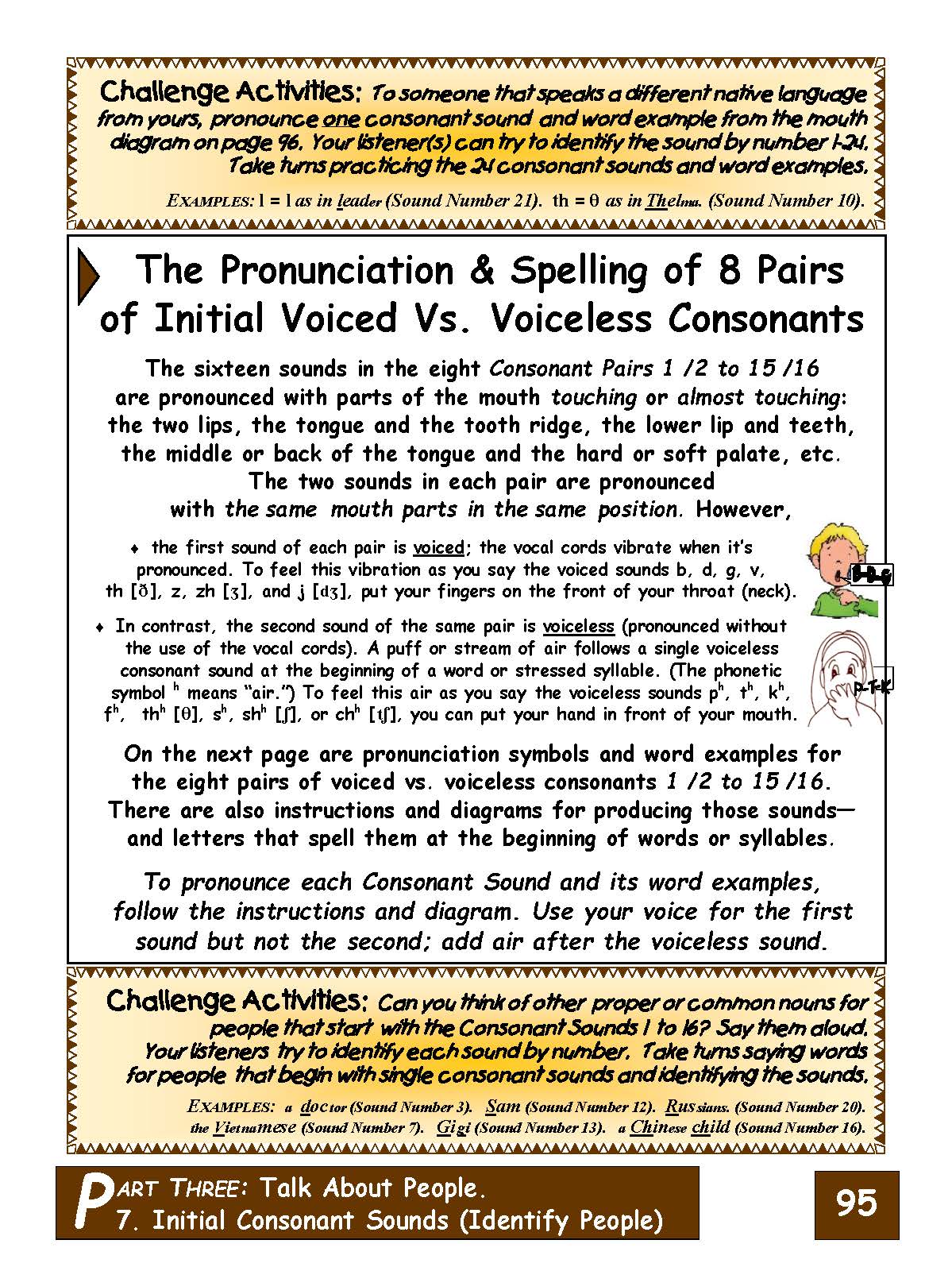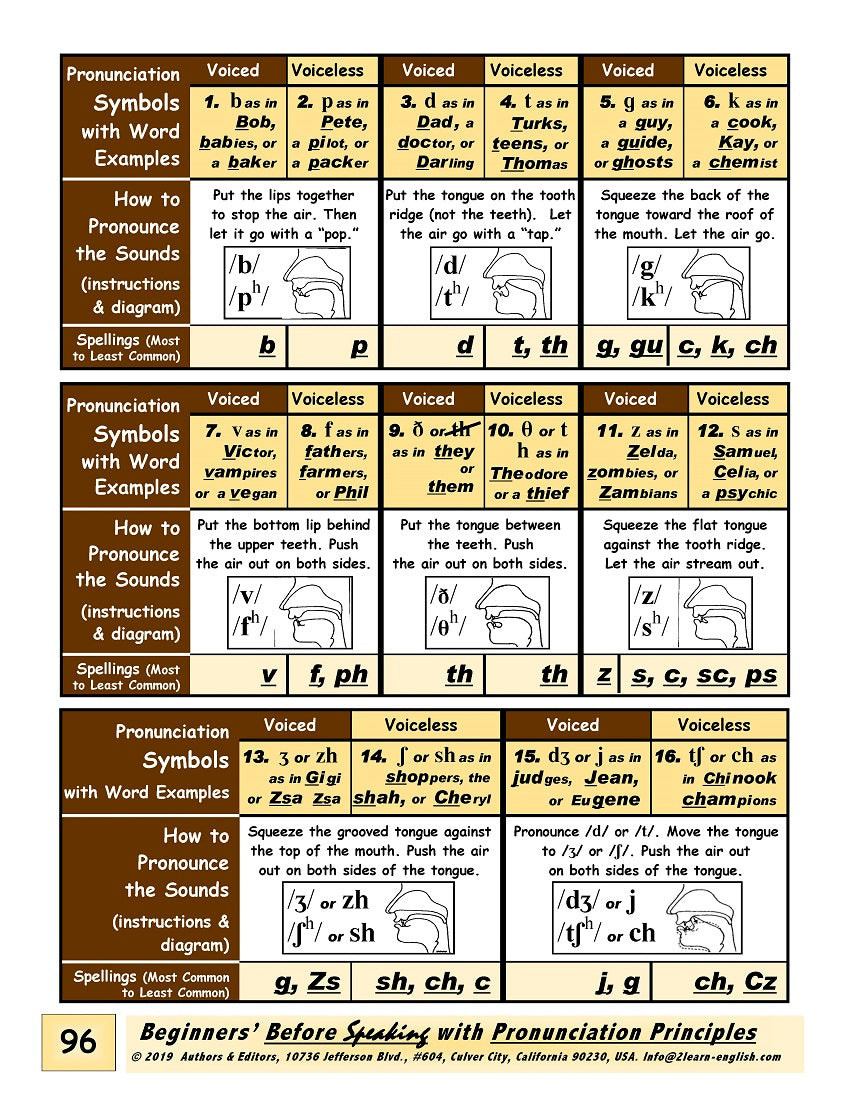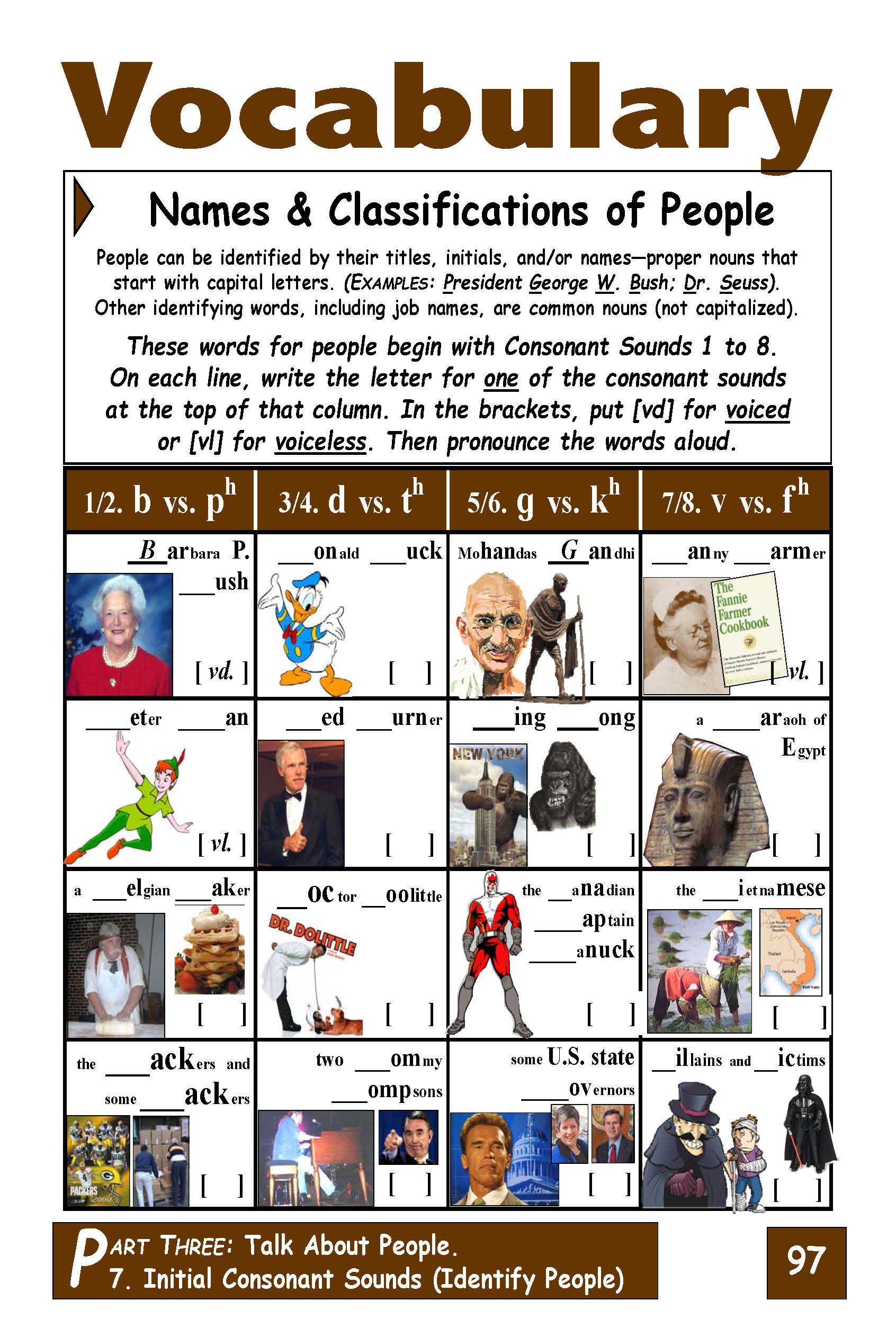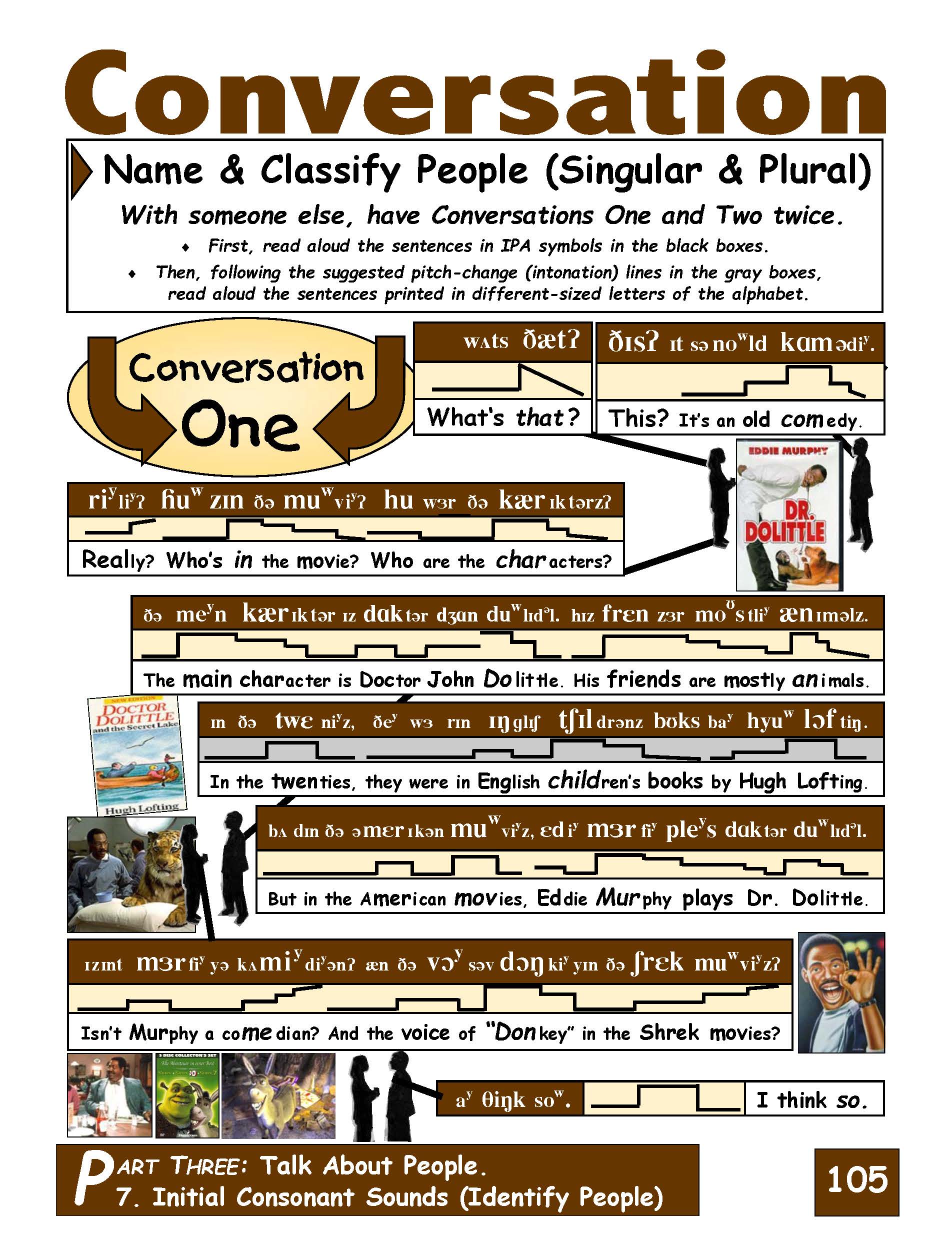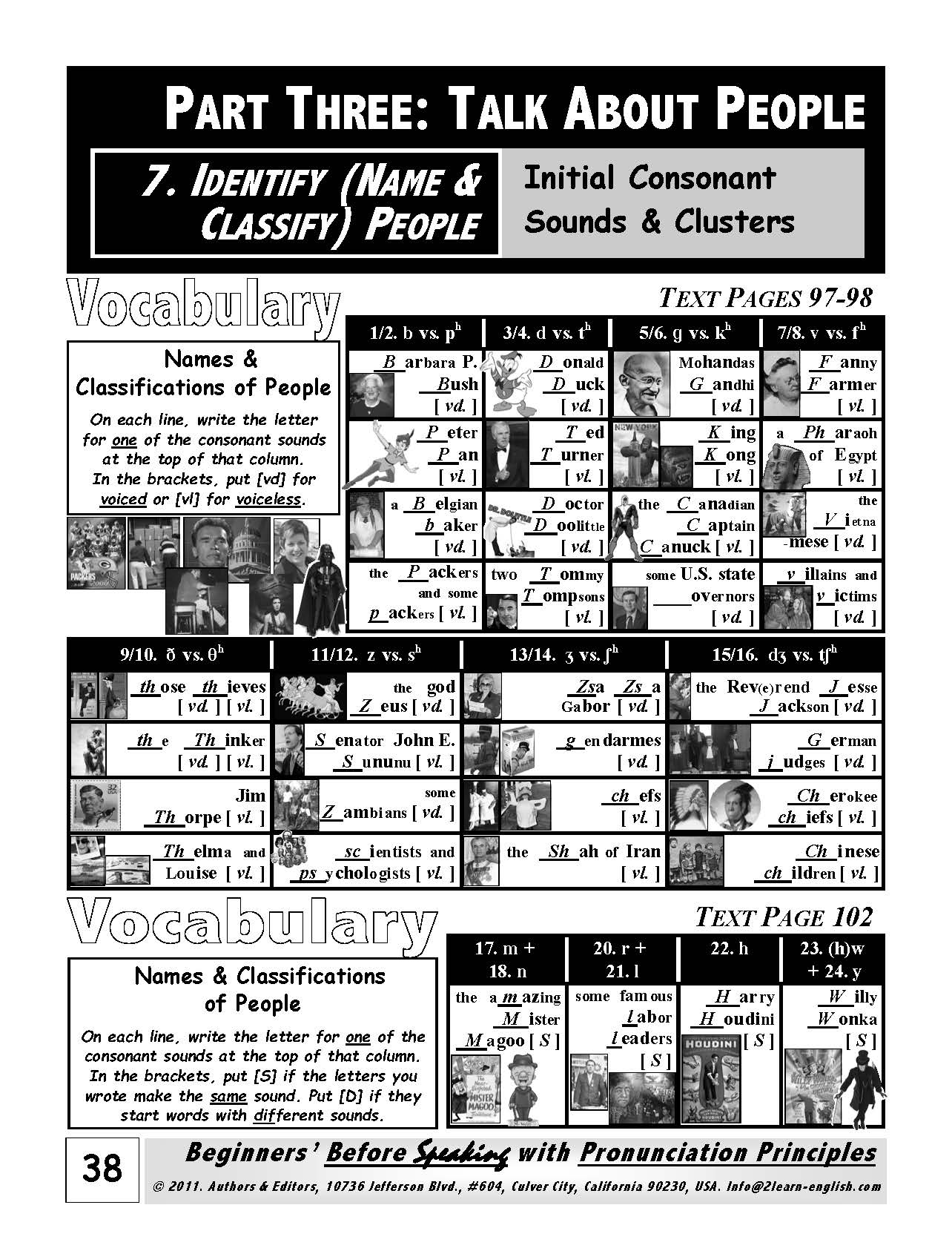Work/Life English
E-03.01 Aiming at Initial Consonant Sounds & Clusters, Talk About People by Naming & Identifying Them
E-03.01 Aiming at Initial Consonant Sounds & Clusters, Talk About People by Naming & Identifying Them
Part Three-7 (Identify [Name & Classify] People With Focus on Initial Consonants) from Talk About People, from Beginners’ Before Speaking with Pronunciation Principles, pages 93-112 + Suggested Language to Use in Activities from 7 pages of Answers to Text Exercises
20 + 7 (27) pages
Who It’s For: (Beyond Beginning) American-English Teachers & Helpers Interested in Talk about People—Ready to Polish Pronunciation with Focus on Initial Consonants
Why It’s Useful: Once (new) English speakers have acquired credible accents overall, they can (again) focus on specific sounds—this time Consonants & Clusters in initial word positions. Since all sounds occur in Part Three-7, there’s plenty of Vocabulary to name people with Proper Nouns and identify them with common-noun phrases. The many examples include famous people, living or not; cartoon & fictional characters; occupational, nationality, & other designations; groups & pairs. Pronunciation-related pedagogy covers “Voiced vs. Voiceless Consonants,” “Stops vs. Continuants,” Sound Formation (with visuals), and Regular vs. Irregular Spellings of consonants & clusters that begin words or syllables. As usual, (illustrated) Answer Key excerpts follow.
What You’ll Do:
[1] Look over the visuals & listings in the Part Three Opener: Talk About People. Sub-Parts 7, 8, 9 cover Initial Consonant Sounds & Clusters, Medial & Final Consonant Sounds; and Pausing vs. Sound Linking. The Vocabulary & Content of the three Parts are intended to help text users Identify People by Name & Classification, Tell People’s Activities, and Get to Know People.
[2] Returning to individual sounds, Pronunciation Sections deliver a diagram of “Mouth Parts Used to Pronounce 24 Consonant Sounds,” contrasts between the sounds of eight Voiced vs. Voiceless pairs, explanations of differences between “Stopped” & ‘”Continuing” Consonants. and the articulation of seven sounds not occurring in pairs. Refer to these when putting initial consonant letters (for regular vs. irregular spellings) into labels that name or describe (real & imaginary) people: items to complete, read aloud, and discuss are organized into eight Grids of colorful visuals. These are sure to trigger interest in history, (pop) culture, media, human endeavor, and other open-ended topics. They’re multi-leveled & multi-purpose.
[3] In between the kinds of sections mentioned above, you can repeat annotated Conversations to later use as models, attempt Challenge activities, compare your notions to those mentioned in corresponding Answer Key pages, and more.
Couldn't load pickup availability
